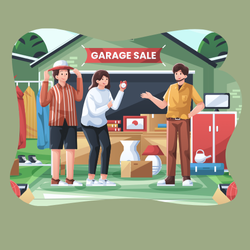Keeping track of everything gets easier with clear and consistent labeling. Whether you’re organizing files at the office, sorting kitchen supplies, or just trying to make your home more manageable, good labeling techniques save tons of time and make daily routines less stressful. I’ve spent years experimenting with different labeling methods in all sorts of settings, from tiny apartments to busy offices. I’ll break down practical ways you can use labeling to keep things in order and find what you need faster.

Why Effective Labeling Matters
Labels work as quick guides that help everyone know what’s where at a glance. This is about more than being neat; it’s about creating systems that save time and reduce frustration. Loads of studies show how much time we waste looking for lost items, whether it’s staplers at work or spices at home. Clear labeling not only keeps you sane but also cuts down on searching, restocking, and mistakes. Whether you’re managing a home pantry or an office supply closet, a labeling system makes it easier for anyone (not just you) to find stuff and put it back correctly.
Labeling has changed a lot and is way more effective now than just sticky notes or scraps of masking tape. Modern label makers, apps, and design templates have made it much easier to track what you have, know what you’re running low on, and quickly spot what’s out of place. I’ve watched organizations save money simply by taking inventory more efficiently thanks to good label use. You can even cut down on duplicate purchases because you can see what you already have at a glance, and this peace of mind brings less stress to your day.
Getting Started With Labeling
Jumping into labeling doesn’t require fancy equipment. A pen and tape or some printable stickers do the trick for basics. But thinking through what you need to label is a smart place to start. Here’s how I usually approach it:
- Decide What Needs a Label: Focus on items or areas where confusion or wasted time tends to happen. Kitchen containers, office files, cords, tools, and craft supplies are all good candidates. Don’t worry about labeling everything at once — start where a little more clarity will help the most.
- Choose the Right Materials: Not all labels are equal. For high-moisture areas like the bathroom or fridge, waterproof labels are super useful. For binders or files, regular adhesive labels or paper tags are fine. Think about what the label will have to put up with day to day, and pick materials accordingly.
- Keep it Simple and Clear: Labels are supposed to save you time, not give you a puzzle to solve. Use larger, easy-to-read fonts and keep the wording brief but specific. Avoid handwriting that’s hard to read, and go for typed labels when possible.
Step-by-Step Guide To Creating a Labeling System
Building a labeling system isn’t complicated, and you really don’t need to redo everything in one go. Here’s the process I use for both home and work spaces:
- Sort and Group Items: Start by categorizing what you own. For example, group all baking supplies in one spot, or put all the printer cables together. Doing this makes it easier to know what kind of labels you’ll need and to make the process efficient.
- Pick a Consistent Label Style: Using the same format (font, size, and color) across labels helps you spot things at a glance. Some people like color coding by category or room, which works super well if you’re a visual type.
- Label Everything In One Area First: Getting a small section labeled, like your desk or a cleaning supply basket, brings an instant feeling of progress. This gives you a good start and makes it easier to keep going.
- Include Useful Details: For food labels, I often add expiration dates. For boxes, I sometimes list contents (for example, “Holiday Lights, 2 strands and extension cord”). The extra detail is a lifesaver when you’re searching for something specific down the road.
- Make it Easy to Update: Life changes fast, so removable or erasable labels are convenient for bins and folders that change contents often. Being able to swap out a label without sticky residue or wasting supplies means your system can keep up with your changing needs.
Tips for High-Traffic Areas and Everyday Use
Areas that get used all day, like entryways, pantries, shared worktables, or laundry rooms, need clear, durable labels. I’ve noticed a few practical adjustments make these spaces easier to use and manage:
- Use Larger Fonts for Family or Team Areas: If more than one person is using the space, big, bold labels help everyone know where things belong and where to put them back. The bigger, the better, especially for high-traffic spots.
- Try Laminated Labels in Messy Spots: Kitchens and garages are notorious for splatters and grime. Laminated labels or sturdy plastic tags last a lot longer and clean up easily with just a wipe.
- Go Vertical: Hanging tags or clipon labels are great for baskets, crates, and deep bins. They don’t peel off easily, and you can move them around without hassle.
- Photo Labels for Kids or Visual Learners: Sometimes a picture is faster to spot than words. A small photo or icon on a bin makes toy storage or supply closets a breeze, especially for nonreaders or young kids just learning to keep things tidy.
Creative Labeling Ideas For Different Spaces
Not all spaces benefit from the same approach. Here are some real life labeling techniques I’ve found super helpful in different kinds of rooms or setups:
- Kitchen Labeling: Use chalk labels on jars for flour and sugar so you can wipe and update them as groceries change. Consider adding dates on perishable goods to track freshness. For containers you use every day, a simple masking tape label with a date works wonders.
- Work or Study Desks: Small cable clips with labels keep chargers and headphones from getting mixed up. A sticky note or dry erase label on drawers makes it easy to know where pens, markers, and tools go — and it’s easy to update if your supplies change.
- Garage and Storage: Weather resistant adhesive labels on sturdier bins help you quickly spot seasonal gear, tools, or old files. Color coding by season or category speeds things up (for instance, red for winter, green for gardening).
- Filing Cabinets and Digital Files: Consistent folder names and colors, even in digital documents, make searching way easier. I set up folder labels by year, then by project or topic. Having this structure has cut minutes — sometimes hours — off searching for key records.
Challenges and How to Handle Them
- Labels Peeling or Fading: In my experience, investing in quality label tape or waterproof stickers helps your system last longer. This is especially true for high-use spots.
- Label Overload: Too many labels get confusing. I try to keep things streamlined and only label what helps clarify or speed up finding items. Sometimes less is more if you want a neat system that other people will use.
- People Not Following the System: Not everyone in a family, classroom, or office likes change right away. Talking through label choices and making sure everyone can read and understand them makes a big difference. Sometimes, adjusting colors or pictures based on feedback from others using the space gets more buy-in and leads to better cooperation.
Label Durability
Labels that fade or fall off will just lead to more clutter. I use clear tape over handwritten labels or buy higher quality printable labels for areas with a lot of wear and tear. For outdoors or utility rooms, waterproof labeling tags survive much longer than standard stickers.
Adaptability for Changing Needs
My storage needs switch up a lot, especially with hobbies that come and go or kids who outgrow toys. Removable chalk labels or dry erase labels are easy to refresh without sticky residue. The flexibility makes switching things up much simpler and keeps your organizing efforts from going to waste when your needs mix up.
Userfriendly Labeling
Simple, large text and clear category names go a long way in shared areas. If I’m labeling for others, like in shared pantries or workspaces, I’ll ask what makes sense to them so everyone’s on the same page. Inclusion makes your system stronger, and feedback solves lots of small misunderstandings before they become big headaches.
Labeling Tools Worth Checking Out

- Label Makers: These offer neat, uniform labels for files, cords, shelves, and more. Some newer models connect to your phone, which is pretty handy for customizing fonts and symbols. Consumer Reports has some reviews that break down cost and durability here.
- Printable Templates Online: For fancier labels or themed spaces, sites like Canva and Avery have tons of free templates that can be personalized and printed at home. These tools make creating custom stickers for kids’ rooms, home offices, or even craft spaces a breeze.
- Chalkboard and Dry Erase Labels: Perfect for everchanging bins, school cubbies, and kitchen storage. These allow you to update info on a whim and wipe it clean with no waste.
- Clear Tape or Lamination: A roll of packing tape or a laminator protects handwritten or printed labels from spills and fading. This little step extends the life of your labels, saving you from relabeling every few months.
Common Questions About Labeling Techniques
Here’s what I hear a lot (and what I usually recommend):
Question: What’s the best way to label containers with changing contents?
Answer: Flexible labels like chalkboard or dry erase stickers let you update with a quick swipe, with no sticky mess or wasted tags.
Question: How do you keep labels looking good in the kitchen or bathroom?
Answer: Waterproof or laminated labels hold up to steam, water, and spill splashes, and are easy to wipe clean. Place them above the line of direct mess if possible for extra protection.
Question: What if I can’t get everyone in the house or office to use the system?
Answer: Keeping labels simple, using icons or colors, and involving others in choosing names or styles helps a lot. Don’t be afraid to tweak the system as habits and needs change, and sometimes letting someone else take the lead on an area creates better buy-in from the whole group.
Bringing It All Together
Smart labeling isn’t about achieving perfection. Instead, it’s about building routines that help everyone find and store things without a hassle. I’ve found that a clear and easy-to-change system works best, and a few well-chosen label supplies go a long way. Labeling is one of those small efforts that pays you back in less clutter and smoother days.
Once you get used to it, you’ll probably wonder how you ever managed without labels. Take it one shelf, drawer, or closet at a time, and you’ll see big improvements before you know it. In the end, the right labels really can give a boost to the organization and enjoyment of any space you spend time in, whether it’s your home, office, or even your car.

Happiness is finding the right tool, right when you need it!
